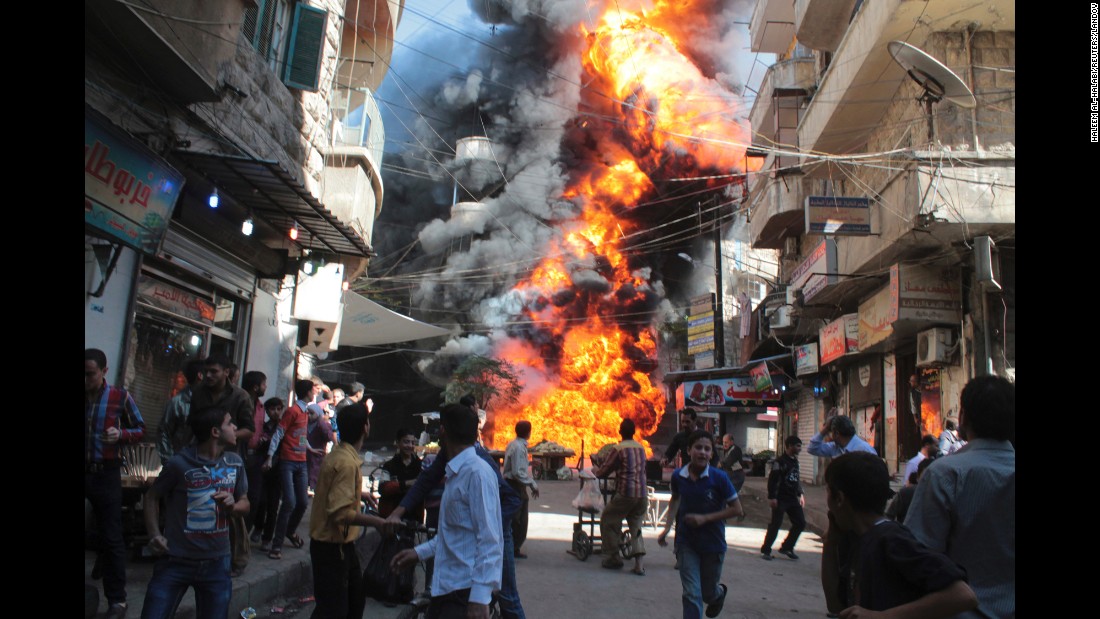
The Syrian government—a dictatorship known for imprisoning, torturing and disappearing dissidents—is easy to vilify. And over the last five years of Syria’s civil war, it has committed its share of atrocities. But there is more than one side to every story, and US media coverage has mainly reflected one side—that of the rebels—without regard for accuracy or basic context.
As the Syrian government recaptured East Aleppo from rebels in recent weeks, media outlets from across the political spectrum became rebel mouthpieces, unquestioningly relaying rebel claims while omitting crucial details about who the rebels were.
Almost always overlooked in the US (and UK) media narrative is the fact that the rebels in East Aleppo were a patchwork of Western- and Gulf-backed jihadist groups dominated by Jabhat Fateh al-Sham (formerly Jabhat al-Nusra)—Al Qaeda’s affiliate in Syria—along with its ally, Ahrar al-Sham (Daily Beast, 8/8/16; Foreign Policy, 9/1/16). These groups are explicitly anti-democratic and have been implicated in human rights violations, from mass execution and child beheadings to using caged religious minorities as human shields.
In the absence of any desire to evoke a political response, US media would surely have identified East Aleppo’s rebels by the name of the most famous militant group in the world—Al Qaeda. Yet press reports regularly referred to the simply the militant forces dominating East Aleppo simply as “rebels.”
“Women in Aleppo Choose Suicide Over Rape,” declared a headline at the Daily Beast (12/12/16). The source of this very serious claim was Abdullah Othman, a member of Jabhat Al-Shamiya, or the Levant Front, an umbrella group whose membership consists of several jihadist rebel factions. So far no evidence has been presented, at least not publicly, to substantiate Othman’s claim. But that didn’t stop his story from spreading like wildfire across social media and being picked up by Commentary (12/13/16), Mic (12/16/16), Elle (12/13/16) and Foreign Policy (12/16/16), among others.
NBC News (12/13/16) reported that “scores of civilians were burned alive by regime forces.” The source for this accusation was unspecified “reports from Arab media.” The Independent (12/17/16) warned of “house-to-house murder.” The source was British politician David Miliband. The UN (12/13/16) cited “credible reports” of 82 civilians being shot “on the spot” by pro-government forces. While this is certainly plausible, the UN, which was not on the ground in East Aleppo, has yet to follow up on the matter.
US media also promoted accusations made by self-described “media activists” in East Aleppo warning that the Syrian regime was going to slaughter them. State Department spokesperson John Kirby called the messages “brave” and praised those who posted them as providing “independent third-party media coverage” of the horrors in Aleppo.
But information coming out of rebel areas is far from independent. On the contrary, it is tightly controlled by the jihadist groups that control these areas. These groups do not tolerate activism. They jail, torture and summarily execute activists, as well as lawyers, humanitarian workers, journalists and minorities. This should raise questions about anyone purporting to be an activist from rebel areas. But in the Western press, it doesn’t, which is why one of the most widely featured media personalities out of rebel-held Aleppo, Bilal Abdul Kareem, has been uncritically promoted by CNN (12/16/16) and even the usually adversarial Intercept (6/30/16), despite a well-established record of pushing hyper-sectarian propaganda for extremist groups (AlterNet, 12/29/16).
If media outlets were quick to grant legitimacy to rebel accusations, they ignored or downplayed rebel atrocities.
For example, when the rebels burned several buses (and killed the drivers) meant to evacuate the sick and injured from two besieged Shiite villages in Idlib, the New York Times (12/18/16) buried the details of the incident deep inside in the 19th paragraph of a story on evacuations.
Reports that the rebels shot at civilians attempting to flee to government areas and withheld food and humanitarian aid from civilians rarely made it into Western media reports.
While both sides have accused the other of carrying out massacres in Aleppo, only rebel accusations received widespread US media coverage. But the only evidence to emerge so far points to the rebels as culprits. Ahead of their evacuation from East Aleppo, rebel groups reportedly executed an estimated 100 Syrian soldiers they were holding prisoner, according to pro-government forces. The bodies were found in a local school. Despite photos, corroborating video evidence and the fact that rebels have carried out mass summary executions of Syrian soldiers taken prisoner in Aleppo in the past, US media outlets mostly ignored it. One of the groups alleged to be behind the killings is Nouriddeen Al-Zinki, a recipient of US weapons. (Months ago, Al-Zinki fighters videotaped themselves beheading a child. The gruesome act was met with a shrug by the group’s Western backers.) Russia also reported finding mass graves of tortured civilians and booby traps during its sweep of East Aleppo, which received little to no attention.
(From Rania Khalek, FAIR, 1/4/17)
